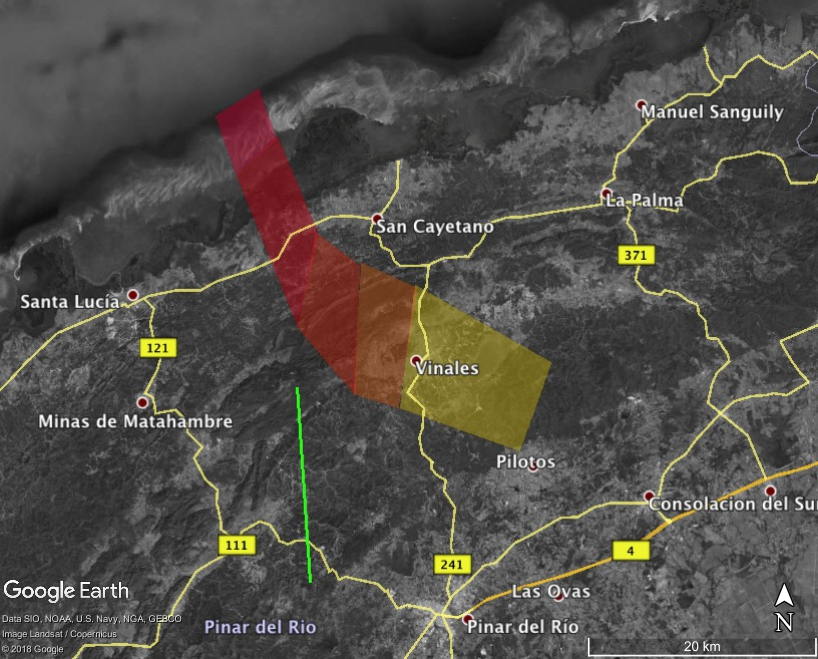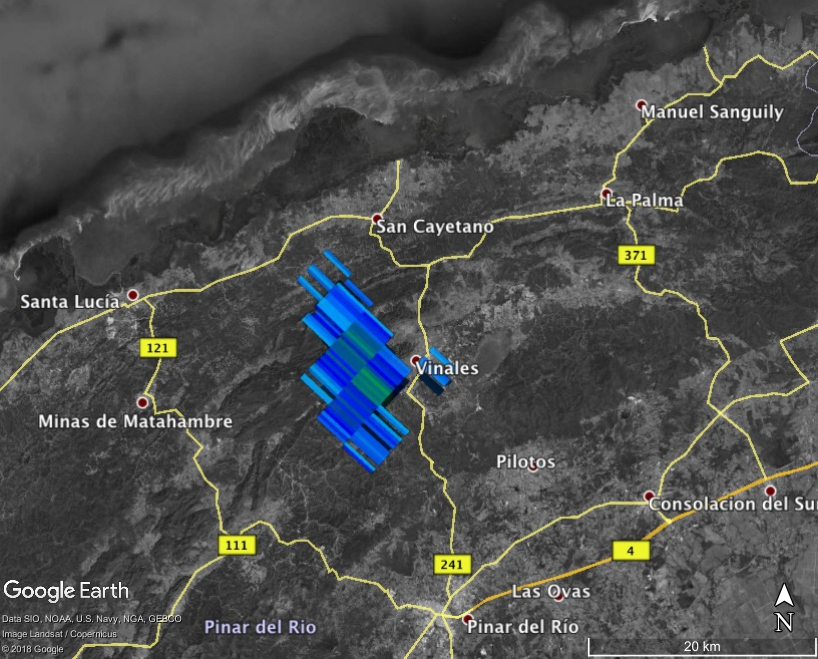DATE/TIME2/1/2019 @ 18:17 UTC2/1/2019
|
LAT/LONG22.613415 • -83.7129
22.613415
|

This meteorite fall was a very bright daytime fireball that occurred at 2:17 PM local time on 01 February 2019, or 01 Feb 2019 18:17:10 UTC. The fireball was seen across southern Florida and reported by thirteen eyewitnesses to the American Meteor Society, but was widely seen across western Cuba as a bright daytime fireball accompanied by loud sonic booms.
Meteorites have been recovered from this event, and images of stones ranging up to ~fist-sized have been widely reported in social media.
This event is recorded as American Meteor Society event number 513 for 2019. Signatures of falling meteorites can be found in imagery from the NEXRAD weather radar network operated by NOAA, observed from the KBYX (Key West) radar.
The first appearance of falling meteorites on radar occurs at 18:18:14 UTC and 10,600 m above sea level (ASL) in the 1816 UTC data set for the KBYX radar in the 0.88 degree elevation radar sweep. Signatures consistent with falling meteorites appear in a total of three radar sweeps from the KBYX radar, with a final signature appearing at 18:22:02 UTC.
This event was observed by a wide range of observational platforms, with especially detailed information available from the Geosynchronous Lightning Mapper (GLM) instrument on the GOES weather satellites. Among other observations, a small sulfur dioxide (SO2) atmospheric plume from the fireball was observed by the GOES-16 satellite. As an example of the data and media coverage available for this meteorite fall, see the following:
https://gizmodo.com/fireball-over-cuba-exploded-with-the-force-of-1-400-ton-1832346993
Calculations of meteorite fall mass are pendng at the time of this writing (05 Feb 2019).
Meteorites recovered from this event have not yet been classified by the Meteoritical Society.
